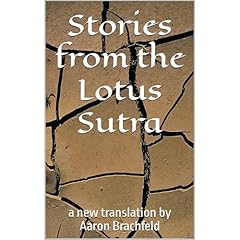
The Lotus Sutra
The White Lotus Sutra of the True Dharma
No se pudo agregar al carrito
Add to Cart failed.
Error al Agregar a Lista de Deseos.
Error al eliminar de la lista de deseos.
Error al añadir a tu biblioteca
Error al seguir el podcast
Error al dejar de seguir el podcast
Obtén 3 meses por US$0.99 al mes
 Exclusivo para miembros Prime: ¿Nuevo en Audible? Obtén 2 audiolibros gratis con tu prueba.
Exclusivo para miembros Prime: ¿Nuevo en Audible? Obtén 2 audiolibros gratis con tu prueba.
Compra ahora por $25.00
-
Narrado por:
-
Taradasa
The Lotus Sūtra is one of the most important Mahāyāna texts and the most widely read, chanted and revered, particularly in Asian Buddhist countries, notably China and Japan. It is certainly a remarkable document, replete with the Mahāyāna characteristics of fantastical images, extraordinary appearances, magical happenings, views of time and space which are galactic in size; and pronouncements which are definite, unequivocal, practical in some areas and dependent upon a faith commitment in others.
First and foremost, it proclaims the one yāna or vehicle of the Mahāyāna teaching as pre-eminent, over other teachings, especially those following the paths of the śravakayāna (the hearers – the bhikshus) and the pratyekabuddhas (those attaining enlightenment through a solitary path); but also the lay men and lay women. These are the ‘four classes of assembly’ who, according the Lotus Sūtra, have been following the ‘preliminary’ teachings presented by the Buddha Śakyamuni as an ‘expedient’ (skilful means). The Lotus Sūtra sees the Buddha, teaching from the Gridhrakuta, the Vulture Peak, the full teaching of the Mahāyāna which leads unerringly (if over aeons in larger numbers than the sands of the Ganges!) to nirvāna. Contained within the 27 chapters are many of the principal Buddhist teachings seen in all the schools across the world: the four noble truths, the 12 nidāna chain, the six paramitās or perfections; again and again the qualities of mindfulness, diligence, patience and spiritual vigour or energy are propounded – without these, nirvāna is not attainable. In short, the path to enlightenment is not for the faint-hearted. Around these core teachings are magical stories of numerous Buddhas from different time eras appearing to support the teaching of Śakyamuni; bodhisattvas appearing from cracks in the ground; the Buddha Prabhūtaratna, a Buddha of the far past, appearing in a jeweled stūpa; celestial chariots flitting around the sky; and the familiar bodhisattvas of Manjuśri, Maitreya, Bhaishajyarāja and many others all have a place in this ultimate cosmic drama.
The Lotus Sūtra is an extraordinary vision, far from the more practical, straightforward texts of the Pāli Canon. For those not accustomed to extreme Mahāyāna images it can appear very strange indeed. But for those prepared to go with it, it is remarkably absorbing with a particular charisma and, without belittling it, even charm. Nevertheless, it is a pinnacle of world Buddhist literature. The Lotus Sūtra was originally a Sanskrit text, Saddharma Pundarīka, which is translated variously – here, it is The White Lotus Sūtra of the True Dharma, though it is generally known by its short version. Its popularity in the East is based on a 5th century translation by the respected Chinese translator Kumarājīva, and most of the recent English translations have come from this Chinese source. However, the first Western translations (from a Sanskrit text originating from Nepal) were by Eugène Burnouf into French in the 1852; and then, using the same source, by the Dutch translator Hendrik Kern into English in 1884. It is this Kern translation, largely still accepted as sound, that has provided the basis for this Dharma Audiobooks rendering. We have felt free to modernize the 19th century language, and clarified some of the technical terms, using words more current in 21st century Buddhist circles; also, where Kern – not a practicing Buddhist – seems to have been unclear about views or practices, these have been modernized. This new rendering, read with understanding and clarity by Taradasa, is the first time the Lotus Sūtra has been available in English on audio in a professional production.
To further aid the understanding and enjoyment of The Lotus Sūtra, a pdf containing the entire recorded text is available with the download of the audio.
PLEASE NOTE: When you purchase this title, the accompanying PDF will be available in your Audible Library along with the audio.
©2019 Dharma Audiobooks (P)2019 Ukemi Productions LtdLos oyentes también disfrutaron:




















Las personas que vieron esto también vieron:


















Remember Merely a Syllable, Fellow Travelers
Se ha producido un error. Vuelve a intentarlo dentro de unos minutos.
Wonderful presentation of the Dharma
Se ha producido un error. Vuelve a intentarlo dentro de unos minutos.
The truly inspiring text
Se ha producido un error. Vuelve a intentarlo dentro de unos minutos.
The narrator is also perfect as he is. Why! Because he enunciated and with great care and exactitudw with a pleasing sound and cadence that pays respect to the words enunciated.
Perfect as it is.
Se ha producido un error. Vuelve a intentarlo dentro de unos minutos.
Excellent
Se ha producido un error. Vuelve a intentarlo dentro de unos minutos.


